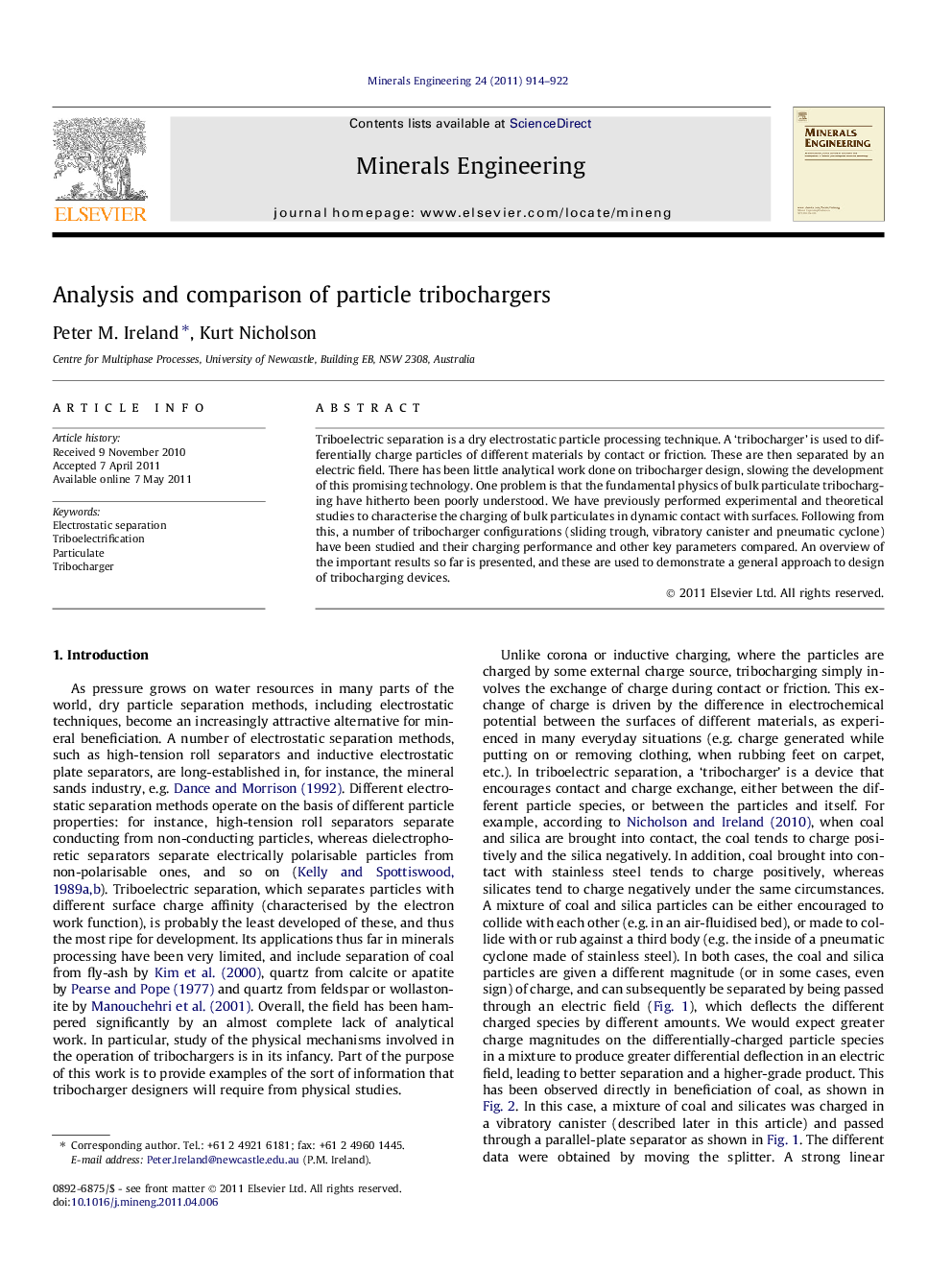| Article ID | Journal | Published Year | Pages | File Type |
|---|---|---|---|---|
| 233764 | Minerals Engineering | 2011 | 9 Pages |
Triboelectric separation is a dry electrostatic particle processing technique. A ‘tribocharger’ is used to differentially charge particles of different materials by contact or friction. These are then separated by an electric field. There has been little analytical work done on tribocharger design, slowing the development of this promising technology. One problem is that the fundamental physics of bulk particulate tribocharging have hitherto been poorly understood. We have previously performed experimental and theoretical studies to characterise the charging of bulk particulates in dynamic contact with surfaces. Following from this, a number of tribocharger configurations (sliding trough, vibratory canister and pneumatic cyclone) have been studied and their charging performance and other key parameters compared. An overview of the important results so far is presented, and these are used to demonstrate a general approach to design of tribocharging devices.
Graphical abstractBetter tribocharger performance leads to increased electrostatic separation efficiency. The effect of design and operation parameters on tribocharger performance is measured and analysed.Figure optionsDownload full-size imageDownload as PowerPoint slideHighlights► An optimisation method for particle tribochargers is demonstrated. ► Three different basic designs are examined. ► We investigate how tribocharger design affects particle charge. ► Charge is measured for different values of design and operation parameters. ► Optimal parameter values are identified.
